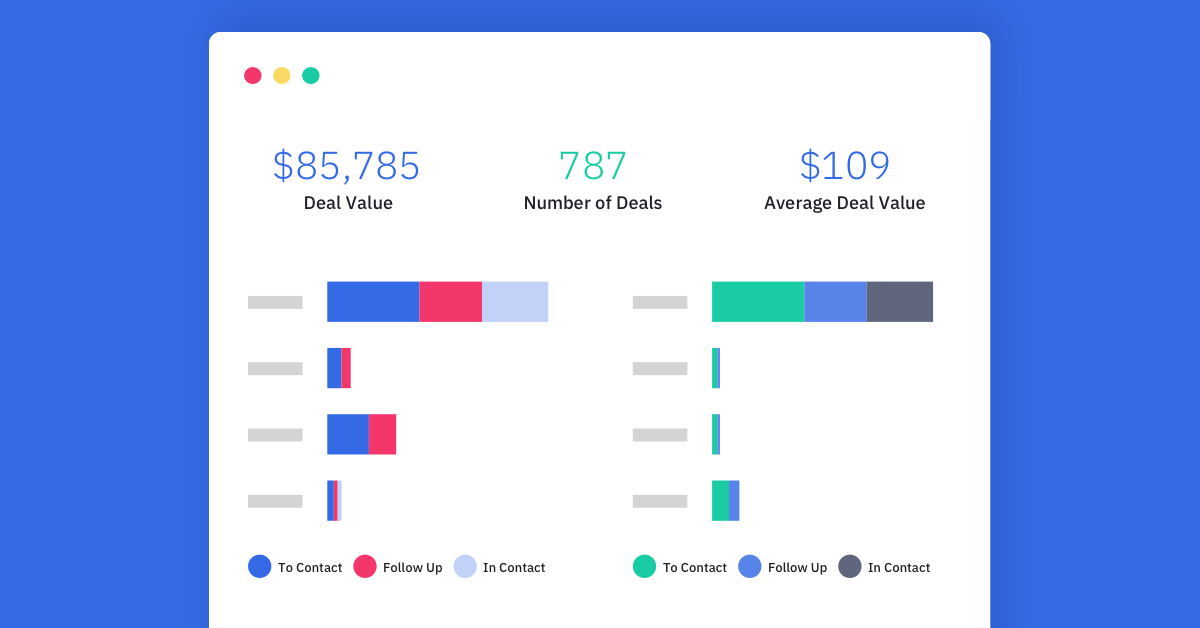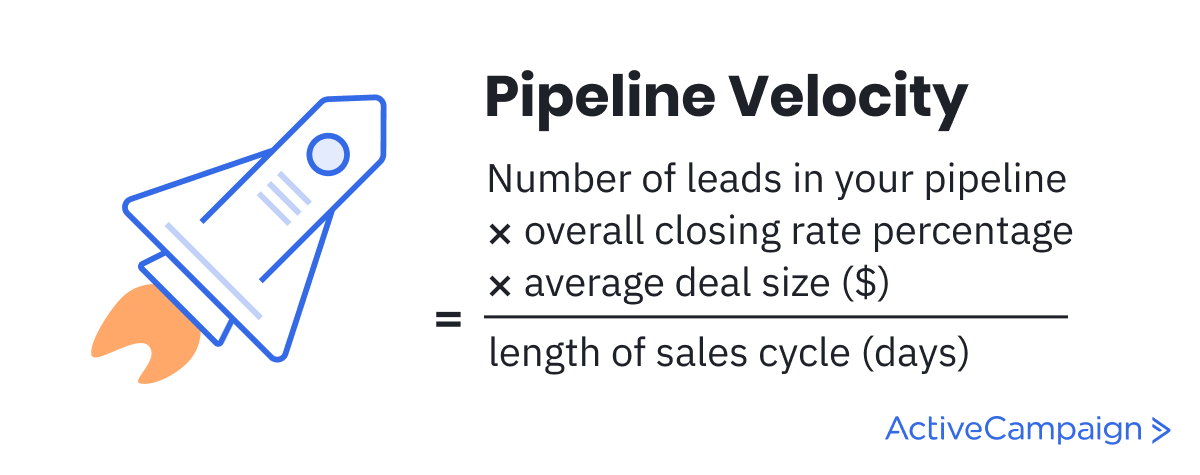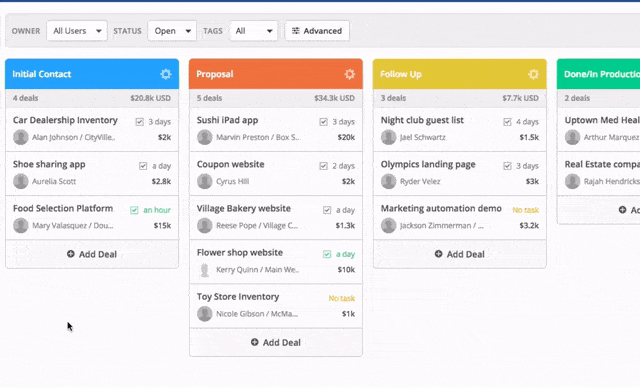CRM for Excel or Google Sheets (Free Download)
Start tracking your sales leads with this Excel and Google Sheets CRM
Stay on top of ongoing conversations with our free CRM template

Automate your CRM for free today
Start a 14-day free trial. No credit card, no setup, no hassle.
Table of Contents
How to Manage Your Sales Process with an Excel & Google Sheets CRM Template

How do you keep track of your sales opportunities?
If you rely on emails or scribbled notes to track business contacts and potential leads, it gets harder and harder to remember who you’ve talked to. Without a sales process in place, you might:
- Lose lead’s contact information
- Give customers a poor sales experience
- Miss sales opportunities
- Complicate your sales process
- Be unable to effectively market your business
- Be unable to predict revenue
- Not hit your business’s sales targets
And that’s just the start. Your entire sales pipeline (the steps you take to turn a potential customer into a paying customer) can stall — which puts your growing business at risk.

If this is how you organize your data, it’s only a matter of time until important info is lost. That’s why 91% of businesses with more than 11 employees use a CRM tool.
Whether you’re a new business or want to grow your sales team, working smarter is the key to closing more deals. Customer Relationship Management (CRM) software can help you manage and automate the customer sales process.
But what if you’re not sure you’re ready for CRM software?
You can use Excel or Google Sheets as a CRM to keep track of your most important sales pipeline information. It’s not a long term answer – but if you need something right this second, we put together a free Excel CRM template you can use.
Keep reading to learn:
- How to use your free Excel & Google Sheets CRM template
- How to manage your sales pipeline
- What metrics matter in your sales pipeline
- The right time to graduate to a dedicated CRM system
- What an automated ActiveCampaign CRM sales pipeline looks like in action
How to use your free Google Sheets CRM Template
It can be a headache to get all of your leads organized.
This CRM spreadsheet keeps track of your sales pipeline by organizing your:
- Contacts
- Sales team
- Opportunities
- Lead status
- Follow-ups
- Deal value
- Sales revenue
What is your sales process?
Before you use a pre-built CRM template, it will help to define your sales process first. If you plan how your contacts will move through your sales pipeline now, it’ll save you valuable time later.
To plan your sales CRM process, ask yourself:
- What do you want to track? Decide what information about your deals and contacts you need to help close sales.
- How will leads move through the sales process? Leads (or deals) are the potential sales opportunities that you try to close (and turn into paying customers). The easy-to-edit sales process steps are found under “Lead Status” in the CRM template, and include:
- Not Started
- In Progress
- Need to Reply
- Awaiting Reply
- Done
- Upsell
- What are your pipeline stages? Stages are the steps in your pipeline that move a lead from initial discovery to a closed deal. The pre-built stages in our free CRM template (that you can easily change to better fit your own business process) include:
- Qualifying
- Contact
- Meeting
- Proposal
- Closing
- Retention
- Where do your leads come from? Use your CRM spreadsheet to keep track of where your leads come from so that you can provide better customer service (and decide where to focus your future marketing). The downloadable CRM template includes:
- Website
- Referral
- Ads
- Social

A pipeline gives you increased accountability, which makes it easy to see opportunities for improvement.
If you don’t define your pipeline, you won’t have the insight you need to see if your sales process is effective — you’ll just have guesswork.
You can learn even more about how to build a sales pipeline in this article.
How do you import your data into a CRM spreadsheet?
Your CRM spreadsheet isn’t ready to use unless you have one very important ingredient: your contacts.
That means you need to move all of your contact information over to your new CRM spreadsheet. You can do that through a few common methods:
- Manual import. If you only have a few contacts so far, the easiest way to populate your new CRM spreadsheet is to manually enter your contact data into your spreadsheet.
- Email or other software. There’s a good chance you’ve used email to keep track of all of your contacts and ongoing deals. If you use Gmail, you can export your contacts into a CSV file, open that file in Excel or Google Sheets, and then copy your data into your CRM spreadsheet. You can also import a CSV contact file from many other platforms, including:
- Outlook
- Mailchimp
- Constant Contact
Once you have your spreadsheet completely set up, how do you manage your sales process so that you can make the most of your CRM spreadsheet?
How do you manage a sales pipeline?
When you can track leads in an Excel or Google Sheets CRM spreadsheet, you might think the sales process is now hands-off. But do your leads become customers — or do they fall through overlooked cracks in your pipeline?
Poor CRM management can lead to a business suffering financial losses...or even failing.
How can you keep your sales pipeline healthy?
Here are 9 tips for managing your sales pipeline:
- Invest time and resources: According to Forbes, companies that spent at least 4 hours managing their sales pipeline saw 14% greater revenue growth than those who spent only 1 hour a month. Have regular meetings with your team to discuss:
- Leads currently moving through the pipeline
- Leads that were disqualified in a later sales stage. Why were they lost?
- Leads (especially balky ones) that were won. What made them decide to buy?
- Train your team to use the CRM spreadsheet: Sales teams that train their sales managers in sales pipeline management report 23% greater revenue growth than those that don’t.Test bullet
- Follow up: The majority of salespeople give up after two calls — when it takes eight calls on average to close. And get this — 27% of sales leads are never followed up at all. That’s a lot of leads that could’ve become customers.Test bullet
- Keep it short: The longer your sales process, the more chances your potential customer has to change their mind or find a different product to solve their problem. Sales pipelines are only as effective as they are efficient.
- Work for referrals: People are 90% more likely to buy from a business after a word-of-mouth recommendation.
- Collaborate with marketing: Align your sales and marketing language, because when sales and marketing are collaborative, people qualify themselves. 80% of marketers and 70% of sales reps rank “strong alignment between sales and marketing” as important to their company’s success.
- Clean your pipeline: If you do not regularly clean your sales pipeline, it can start to get downright dishevelled — which will make it inefficient. Check your sales pipeline deals for:
- Leads who have gone radio silent
- Deals that have been stuck in one sales stage longer than normal
- That details and notes on each lead are up to date
- Partner up: Partnerships are a cost-effective way to expand your presence and generate new leads. They can also improve existing customer loyalty by providing access to new benefits and products.
- Be open to change: Constantly ask "why?" when it comes to your sales pipeline. Focus on your goals. Test every stage for its impact and urgency. Questioning your stages leads to new ideas and new innovations that will directly impact how you do business.
We have several in-depth articles with ways to manage your sales pipeline better:
What metrics matter in your sales pipeline?
“The road to success is always under construction.” – Lily Tomlin
If you don’t track your metrics, how do you know if your sales process works?
Review sales metrics in your Excel or Google Sheets CRM spreadsheet to give you an idea of pipeline health, sales activity, and stage conversion rates. These give you an accurate way to forecast sales and revenue.
What metrics matter in your CRM?
- Number of leads. How many leads have been qualified?
- Average deal size. How much money does your average sale bring in?
- Sales cycle length. How long does it take to close a deal?
- Close ratio. What percentage of leads convert to actual sales?
- Average deal lifetime. How long is a deal in your pipeline before they’re won or lost??
With sales pipeline metrics, you can determine your pipeline velocity, the speed at which leads move through your pipeline. Pipeline velocity helps forecast revenue.

The formula for pipeline velocity is:
Number of leads in your pipeline x overall win rate percentage x average deal size ($) / days in sales cycle
The changes in your pipeline velocity metric over time are often more important than the actual number. If you multiply your daily rate by the number of days in the month, your monthly revenue forecast will be more accurate.
When is the right time to graduate to a dedicated CRM software system?
Does this sound like you?
- Your have a large contact list. You have more than 50 leads (or 5 ongoing deals at a time).
- You’re getting more leads, and your team has trouble keeping up with manually entering them into your Google Sheets CRM spreadsheet
- Manual errors happen repeatedly as new info is added, so your data isn’t accurate
- You have the resources to move to a CRM software system
If the answer is yes, you might run into lost sales opportunities with an Excel or Google Sheets CRM system as you continue to grow your business. Why?
Google Sheets or Excel is a good place to start… if you’re a small businesses with just a few employees and a small number of leads. As you grow, this system can lead to disorganization. When your sales process is manual you risk human error — and the more people that use your system (and the greater number of leads added to it), the higher that risk.
An automated CRM system gives you the functionality and flexibility to keep your entire sales process moving smoothly...so you can focus on closing more sales.
The ActiveCampaign CRM gives you:
- Sales reporting. Track the performance of individual members of your team and your sales funnel.
- Automated deal updates. Automatically update deal owners, deal stage, deals won or lost, and deal value.
- Win probability. See how likely you are to close each deal, so you can focus your time where it makes a difference.
- Notification emails. Notify your sales team when it’s time to follow up. Add notifications from within sales automations and nurture campaigns.
- Note creation. Take notes directly within each deal and contact record, so that your whole sales team is on the same page.
- Task assignment. Assign tasks to individual sales people, either manually or within automations.
- Connect your email. Connect with Gmail, Outlook, or any other email provider.
- Lead scoring. Find leads most engaged with your business and content. Add scores to overall deals and individual contacts.

A sales CRM with automation stops tasks from piling up on your desk. Automate lead prioritization and contact management so you have time to sell.
What does an automated ActiveCampaign sales pipeline look like in action?
Airtame makes tech that lets you share your screen from any device. Airtame uses ActiveCampaign’s lead scoring to make their sales pipeline more efficient.
Automations do the heavy lifting of lead nurture so that only the most qualified leads reach the sales team.
Airtame tracks two separate lead scores to improve their conversion rate:
- Customer Fit Score. What’s the lead’s profile, and how close is it to Airtame’s ideal customer?
- Engagement Score. How often is the lead interacting with Airtame’s emails and other marketing?
Customer Fit and Engagement lead scores get updated based on activity and information provided.
The two lead scores are added together. If the combined score is high enough, the sales team gets tagged in to help.
Airtame updates its lead scores based on:
- Which lead magnet the lead came through
- What information contacts provide
- The lead’s level of website interaction
You can update a lead score based on almost anything you can track in ActiveCampaign. Airtame chose these criteria because they found that certain types of contacts are more likely to become customers.

ActiveCampaign lets you manage your contacts in a central platform. Automatically update contact details and view a lead’s entire history from the contact record.
ActiveCampaign’s comprehensive CRM lets you manage every stage of your sales process. It’s highly customizable, so it adapts to your sales pipeline needs — no matter what your industry is.
ActiveCampaign lets you take control of your sales process with a fully automated CRM designed for your growing business:
- Make your sales process crystal clear. Intuitive organization and a simple interface mean you spend less time trying to find the data you need (and more time winning deals).
- Always know who your best leads are. Quickly see which leads in your pipeline you should focus on next by tracking which deals are most likely to close.
- Work smarter with sales automation. Automate time-intensive tasks like daily reminders, data entry, and tracking leads. Focus on growing your business instead.
- Build a better customer experience. Automation lets you connect your sales and marketing data, so you can personalize your customer relationships with ease.
Less time spent digging through emails and business cards means you have more time to focus on what matters, like closing deals.
Automate your CRM for free today
Start a 14-day free trial. No credit card, no setup, no hassle.